GE’s Industry in 3D: It’s time to pay attention to Additive Manufacturing
In May this year, GE held its first ‘Industry in 3D’ event, gathering several hundred international participants from the world of business to discover the current status of Additive Manufacturing and the opportunities that it presents to industry. Whilst the technology has come on rapidly in recent years, GE recognises that there is still a long way to go to convince many business leaders that ‘the time is now’ for its wider adoption. As Metal Additive Manufacturing magazine’s Nick Williams reports, this event sought, through GE’s story and those of its partners and customers, to make the case for AM. [First published in Metal AM Vol. 4 No. 2, Summer 2018 | 20 minute read | View on Issuu | Download PDF]
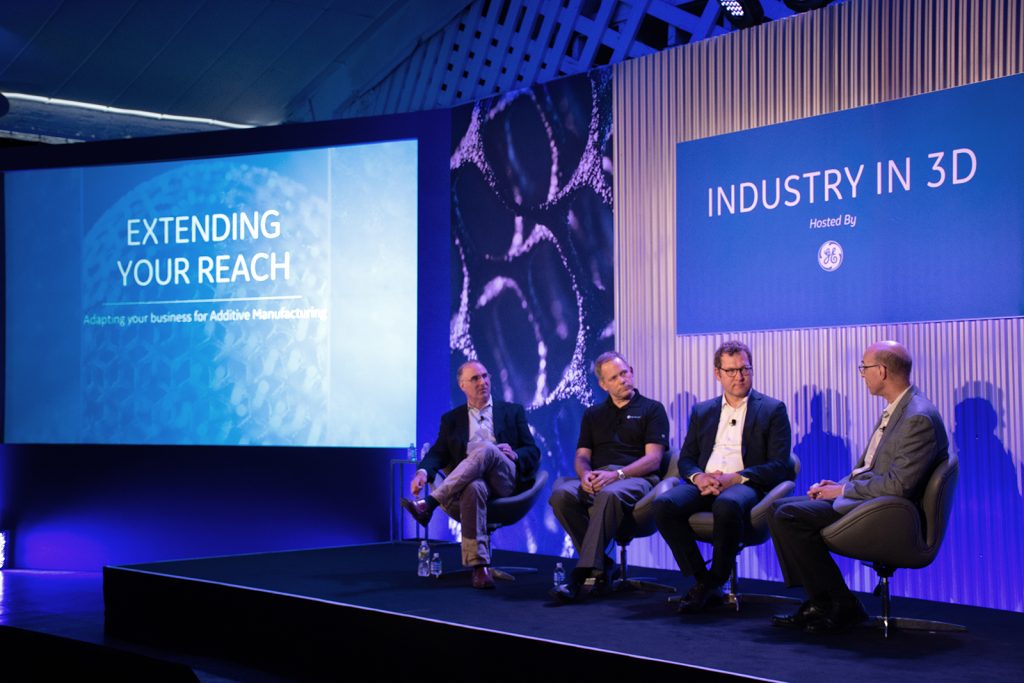
At its inaugural ‘Industry in 3D’ event in New York, USA, on May 3, 2018, GE invited leaders from across industry to make the case for Additive Manufacturing as a technology that can no longer be ignored. The event, which attracted more than three hundred international participants from across the business world, took place in Industria, a historic West Village venue that, when filled with an impressive exhibit area containing state of the art AM machines and applications, served to emphasise just how dramatically the world of engineering has changed since the building’s construction in 1924.
Whilst the tremendous growth of AM over the last decade has been clear for those within the industry to see, in organising this event, GE responded to the fact that not only is there a pressing need to further educate the wider industrial community about AM, but that as a company it is in a unique position to drive this effort.
GE has rarely been out of the news over the last year, in large part as the result of a challenging period for the business which culminated in its recent decision to spin-off its Healthcare division and sell its stake in Baker Hughes, allowing it to instead focus on its core industrial businesses such as aviation, power and renewable energy. Its activities in Additive Manufacturing, which are of course inextricably intertwined with these core industrial areas, have made a significant contribution to the development of the wider AM industry and, as a result, positioned GE firmly at its heart.
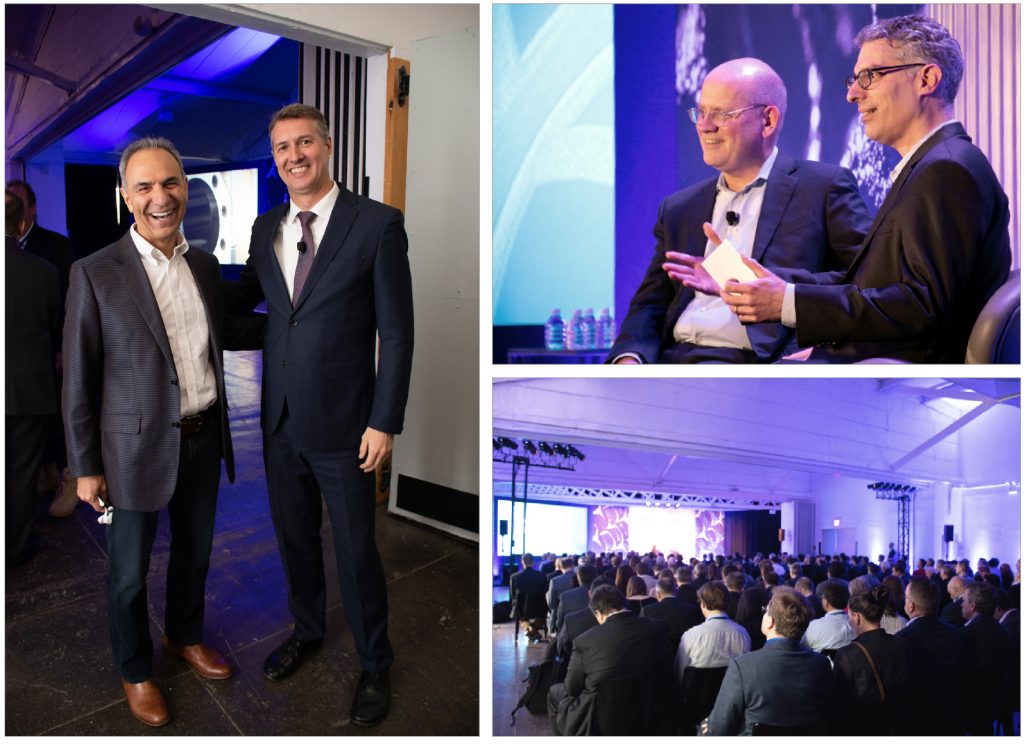
The company’s leading position in the burgeoning AM industry has had two key benefits: firstly, GE now understands better than anyone how AM can bring major cost savings to its businesses, enabling technical innovations that are dramatically improving manufacturability and operational efficiency. Secondly, GE is now firmly established as one of the leading suppliers of AM production equipment and metal powders, thanks to its acquisitions of Germany’s Concept Laser GmbH and Sweden’s Arcam AB in 2016, and AM software specialist GeonX in 2017. These bold moves, and the subsequent establishment of GE Additive, have also served to secure the availability of the production equipment and materials that have become so strategically vital to the company’s core divisions. Further, they have given GE the freedom to exert a greater influence on the development of AM production technology to meet its own evolving requirements. As an example, GE Additive’s Project A.T.L.A.S. (Additive Technology Large Area System) metre-class AM machine is enabling the development of ever larger parts for the next generation of aviation, space, energy and automotive applications.
Understanding industry’s perceptions of AM
Some of the driving factors behind the need to ‘make the case’ for AM were highlighted earlier in the year in the GE Global Innovation Barometer 2018, published in February [1]. The report is based on a survey of more than two thousand international business executives whose line of work involves taking part in their company’s innovation process/policies and who have responsibility for making decisions related to innovation, product development or R&D activities.
Some of the report’s key findings relate to the potential of Additive Manufacturing. Whilst global executives are excited about the potential of AM, believing it will have a positive impact on business (63%), increase creativity (91%) and get goods to market faster (89%), 53% believe AM has yet to reach its full potential, requiring more ‘education and reassurance’.
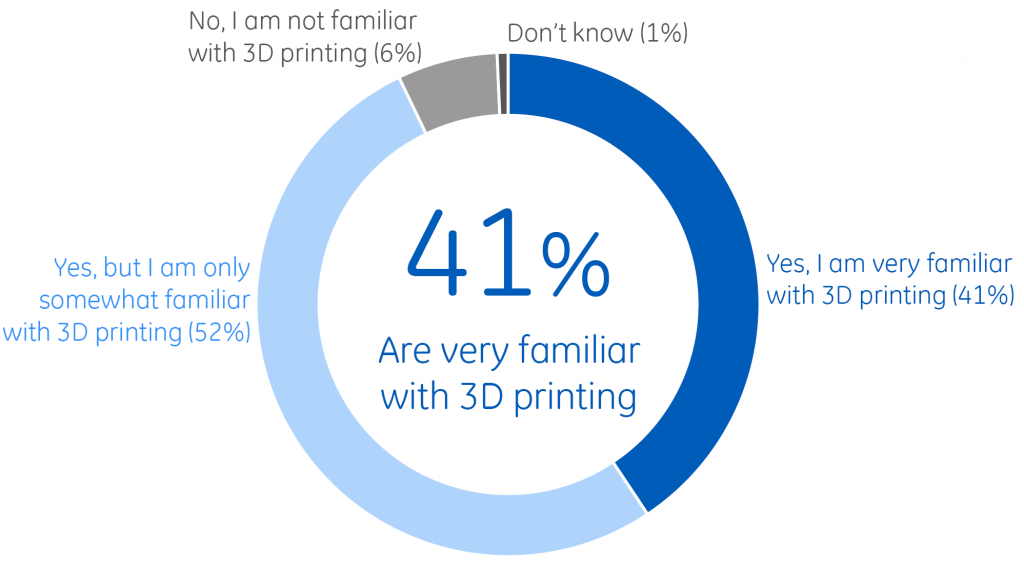
Of greater concern is the fact that only four in ten business executives described themselves as being ‘very familiar’ with Additive Manufacturing, suggesting there is work to be done to encourage the majority of business executives to gain a better understanding of AM and increase their willingness to adopt the technology (Fig. 3).
Also highlighted in the GE Global Innovation Barometer was the perception of AM’s current level of maturity, with 53% of respondents believing that AM will not impact businesses for several years (32%), that it is not a reality yet (21%) or that it isn’t even talked about (5%) (Fig. 4).
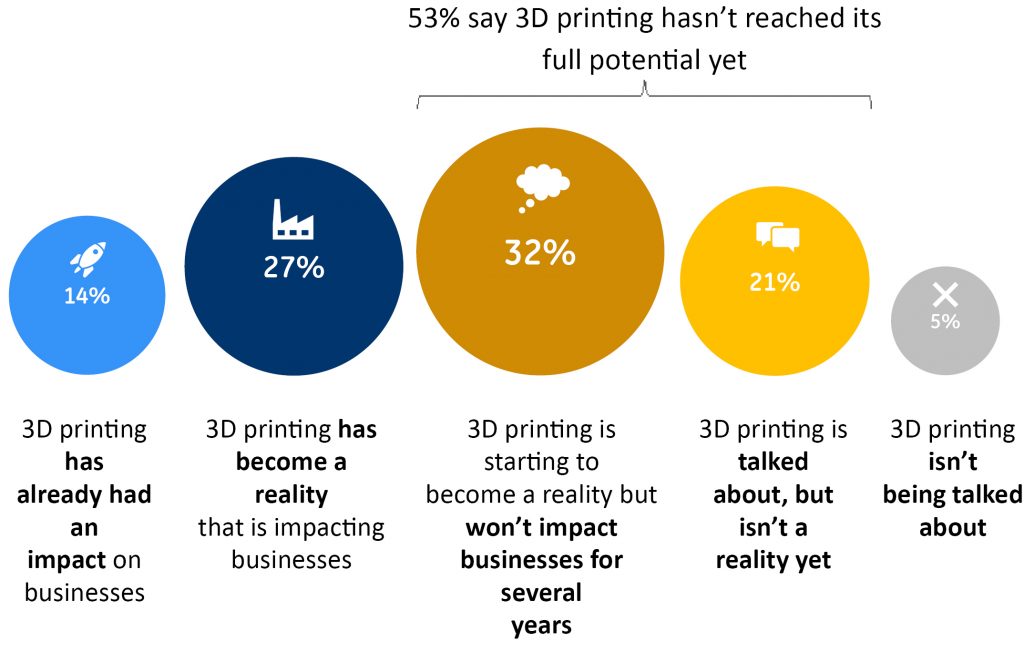
In welcoming participants to Industry in 3D, GE Additive’s CEO and Vice President, Jason Oliver, stated that even with AM’s limited familiarity to-date amongst business executives, “the technology is already changing the world that we thought we knew,” and went on to explain that what has been seen to-date in AM “is the tip of the iceberg.” He stated that what has been achieved thus far has been, in large part, based on designers coming at AM product development from a conventional, subtractive point of view. “What this does is fail to unlock the full creative capability of Additive Manufacturing. When we think about 3D from a subtractive point of view we’re just limiting ourselves,” emphasising that the next phase of industry growth will come as more designers “think about 3D printing from a 3D point of view.”
Through presentations from both AM industry leaders and end-users, combined with high-level panel discussions, the Industry in 3D programme was tailored to educate and inform about how AM is driving developments across a range of sectors, including aviation, automotive, medical, space, power generation and transportation.
Exponential growth? Forecasting AM’s future
In his opening keynote the futurist Paul Saffo considered the exponential potential of the Additive Manufacturing industry, placing the growth of the technology in the context of other transformational advances in science and engineering. What became clear was his conviction that Additive Manufacturing is at a point of tremendous growth. “We are in an exponential age,” he stated. “It’s a really interesting moment [for AM], things are out on the horizon, they are just about to change and about to get really interesting.”
There is no doubt that the Additive Manufacturing industry is still in its nascent stages, but data from AM market experts gives credibility to predictions of AM’s exponential growth potential. An example cited by GE Additive from The Wohlers Report 2018 stated that metal machine unit sales grew 79.9% from 2016 to 2017, from 983 to 1,768 systems [2].
In a white paper published by GE Additive in conjunction with AM market analysts at SmarTech [3] to coincide with Industry in 3D, it was estimated that approximately $13 billion has been spent on AM production equipment, materials, software and services over the past four years, half of that during 2017 alone. The white paper’s authors then projected that more than $280 billion will be invested in Additive Manufacturing over the next ten years.
AM machinery sales are of course indicative of industry adoption rates and it was estimated that by 2027 metal AM machine sales revenue will be $5.4 billion, with 52% of metal AM machines operating in heavy machinery industries, including aerospace, automotive, oil & gas and energy (Fig. 6).North America and Europe, it was suggested, will together account for more than 60% of this revenue.
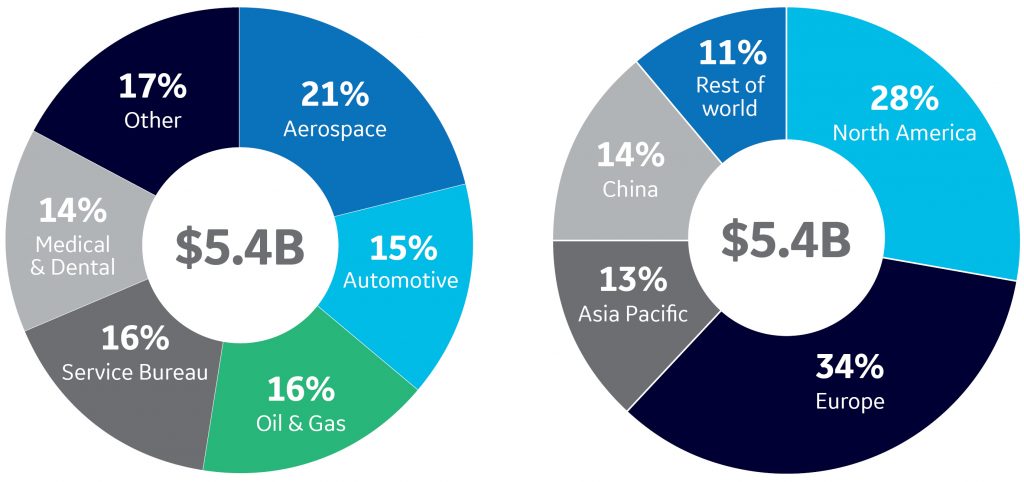
Flannery on GE Additive’s mission
The need to convince industry that “it’s time to pay attention to AM” was the major theme of comments made by GE’s Chairman and CEO John Flannery when interviewed on-stage by the Flux Group’s Bob Safian. Flannery stated following the event, “I am more convinced than ever that this technology will fundamentally transform industry. It will deliver higher productivity and better outcomes for customers in aerospace, medical, automotive, energy and beyond. But like any transformation, change takes time, perseverance and requires people to operate outside their comfort zones.” He believes that when it comes to AM, businesses are excited about its promise, but he recognises that the prospect of the transformation is overwhelming. “The gap between the promise of additive, and the widespread adoption of these technologies, is real.”
“We know that it’s not enough to build our own additive facilities and implement technology within our businesses: it’s up to us to guide our customers in this transformation as well. That is why we set up GE Additive, selling additive machines, materials and consulting services to customers outside GE.” As part of this mission, GE Additive has opened Customer Experience Centres in Munich, Germany, and Pittsburgh, USA, enabling the company to fully support customers on the journey from evaluating an application to starting commercial production. “Here, we lend our knowledge that spans more than a decade and domain expertise in additive to help customers determine how and where it makes the most sense for them to bring additive technologies into their own businesses. In these centres, customers are trained in the technology, are able to collaborate and redesign their product portfolio, learn how to select the right materials for their products and get help building their entire additive operations,” stated Flannery.
How AM has transformed production within GE
The story of GE’s AM journey, from its purchase of Morris Technologies in 2012 to the LEAP fuel nozzle’s move to series production and beyond, is today widely known. More recent updates on how the company has benefited from its use of AM continue to impress and attract extensive media coverage.
GE Aviation’s new Catalyst turboprop engine, known during its development phase as the Advanced Turboprop Engine (ATP), is an invaluable case study on how AM can transform a new product’s design and manufacture (Fig. 7). Developed over two years by approximately 400 GE designers, engineers and materials specialists in the Czech Republic, Italy, Germany, Poland and the US, this is the first civilian turboprop engine to contain metal AM components. According to GE, around a quarter of the engine is metal additively manufactured from advanced alloys.
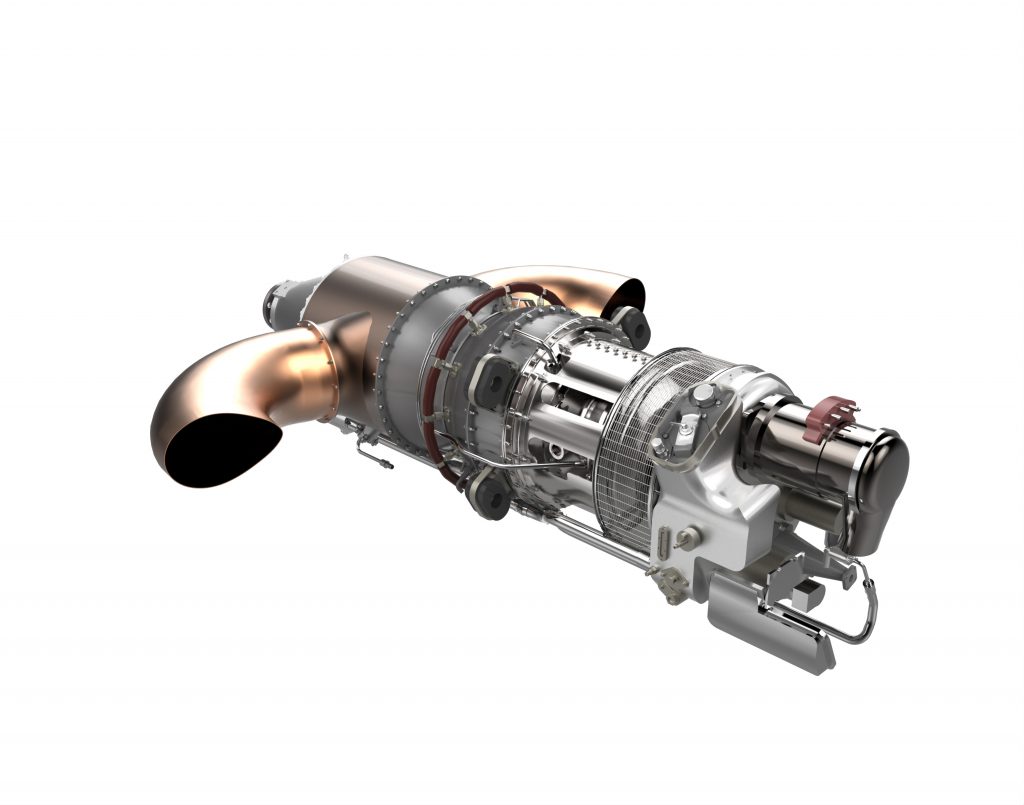
In using metal AM the development team was able to consolidate the number of separate components in the engine from 855 to twelve, reduce the engine weight by more than 45 kg, improve fuel burn by up to 20%, increase power by 10% and simplify engine maintenance. GE’s Oliver stressed that this use of AM also has a dramatic effect on the supply chain, stating, “If the company were to source the 855 parts individually, they would have to travel a combined 60,000 miles to the assembly shop. Now they travel across the parking lot.”
GE Aviation achieved Federal Aviation Administration (FAA) certification of its first AM part in April 2015 and, since then, two more AM parts have been FAA certified and more than twenty additional parts are in active certification projects. GE Aviation has already produced over 23,000 flight-quality additive parts.
When taking a broad view of the cost benefits of AM across the whole of GE, Flannery stated, “We have a target of removing US$3–5 billion cost out across GE and we couldn’t do this without additive. Today, we make parts using additive technologies that we never would have dreamed of just a few years ago. So, our own journey continues to be an amazing one.”
Other high-volume AM successes highlighted
Many of the invited speakers at Industry in 3D highlighted the fact that, for their businesses, AM is very much in the here and now. Kim Smith, Additive Manufacturing leader at Boeing, told the audience that her company has manufactured and delivered 60,000 additively manufactured parts, including components for passenger and military aircraft as well as the International Space Station.
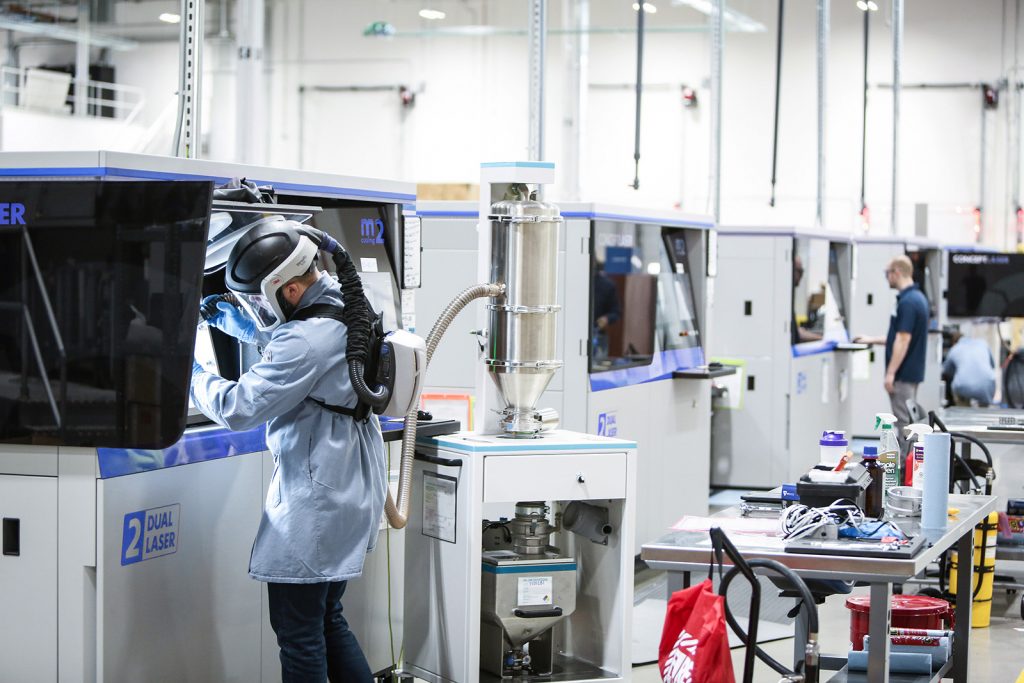
Stryker Corporation, which uses GE Additive machines to produce titanium medical implants with uniquely engineered surfaces that foster bone in-growth or osseointegration, also highlighted how AM is now in high-volume production within the business. John Haller, VP Global Supply at Stryker, explained to participants that investments in AM have enabled the company to focus on the development of innovative new products that would be impossible with traditional manufacturing methods, and it was revealed that Stryker has already supplied hundreds of thousands of these AM titanium implants. These are produced at the company’s AM manufacturing hub in Carrigtohill, County Cork, Ireland, reported to be one of the world’s largest and most sophisticated metal AM manufacturing facilities. Commenting on the further potential of AM, Haller stated, “When designers can think differently without restraints, that’s when additive can really take off.”
GE’s mission to educate the designers of the future
GE Additive’s drive to raise awareness of AM through Industry in 3D is part of a wider mission to ensure that AM is firmly on the agenda of the current generation of design and engineering students. Through its Additive Education Program (AEP) the company has made a significant financial commitment to, over a five year period, invest in educational programmes to deliver AM systems to colleges and universities around the world. Now in its second year, the AEP has awarded polymer 3D printers and curricula to more than 1,000 primary and secondary schools in fifty US states and more than thirty countries, and metal Additive Manufacturing systems to a total of thirteen colleges and universities worldwide.
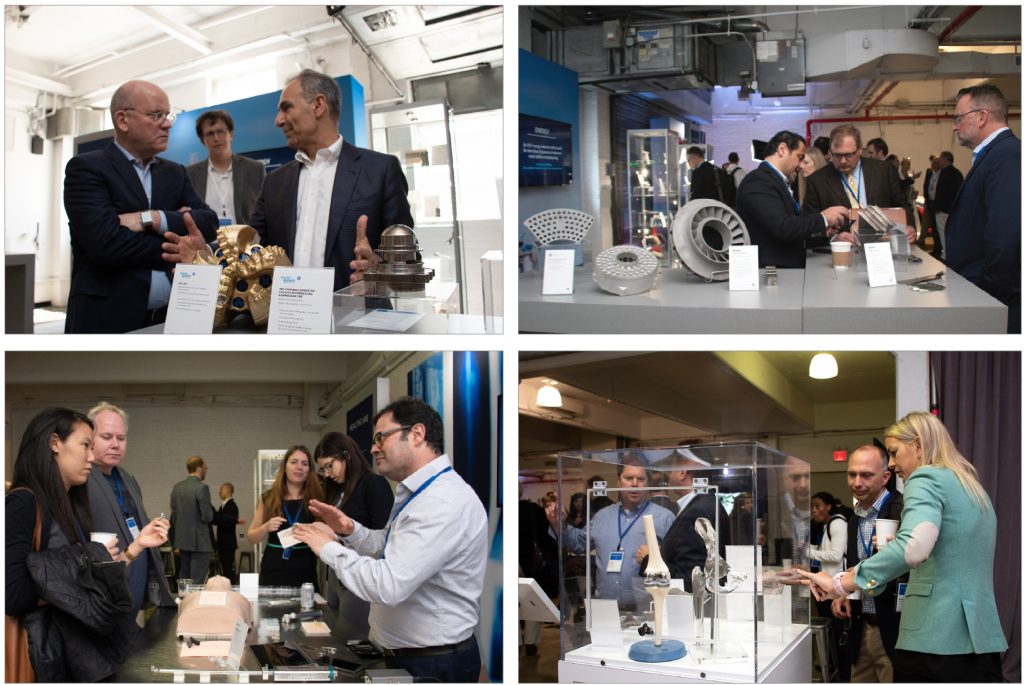
The company recently concluded its AEP for 2018/19 by announcing the five universities in Europe and the United States that will each receive a Concept Laser Mlab 200R metal AM machine. These laser-based systems, worth a combined total of more than $1.25 million, will be delivered in the first quarter of 2019 to Coburg University of Applied Sciences and Arts, Germany, University of Limerick, Republic of Ireland, Calhoun Community College, Alabama, USA, University of Illinois at Urbana-Champaign, USA, and West Virginia University, USA.
“For additive to fulfil its potential, we need to attract as many engineers and materials scientists as possible to build their careers in our industry,” stated Jason Oliver. “Getting machines onto campus and into the hands of undergraduates, researchers and faculty members is a sure-fire way of getting them as excited about additive as we are.” More than 400,000 students worldwide will now have access to AM machines thanks to the GE Additive Education Program.
Future directions
“Going forward, GE Additive will continue to bring together the best in the world of Additive Manufacturing, all under one roof,” stated Oliver at Industry in 3D. This includes continuing to innovate and introduce new machines under the Arcam and Concept Laser brands, as well as metal powders through its AP&C business. There is also a move to broaden the range of technologies that it offers. “Binder jetting is a technology that GE is taking to the next level and we will be releasing a system in the very near future that can print a hundred times faster than current metal additive technologies. So anyone here in one of the high-volume markets, standing back and waiting to step into Additive Manufacturing, pay attention, because binder jetting is going to dramatically disrupt the world that we thought we knew.”
Commenting in relation to the announcement about the recent restructuring of the company, Flannery made it clear that AM remained a core focus, stating, “GE will continue to invest for the future and lead in innovative technologies like Additive Manufacturing and digital to lead the next wave of industrial productivity.”
Industry in 3D participants were left in no doubt that GE Additive and its partners and customers see a bright future for metal AM technology, and, whilst its technology and experience places it in a strong position to compete in its core fields of aviation, power and renewable energy, its continuing efforts to promote the technology to a wide audience can only be of benefit to the industry as a whole.
References and videos
[1] GE Global Innovation Barometer 2018, www.ge.com/reports/innovation-barometer-2018/
[2] The Wohlers Report 2018, www. wohlersassociates.com
[3] White paper: The Additive Journey: The Time Is Now
Presentations from Industry in 3D are available to view on Youtube via this short link: https://goo.gl/bRJSWF







